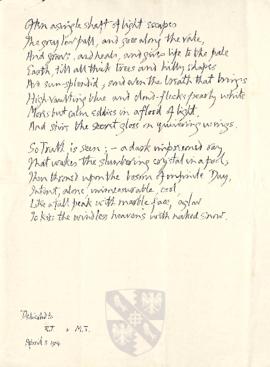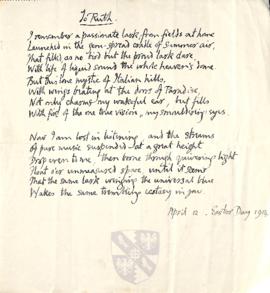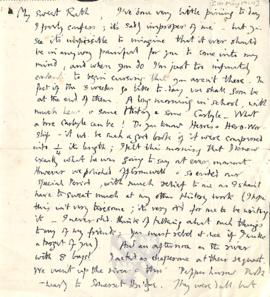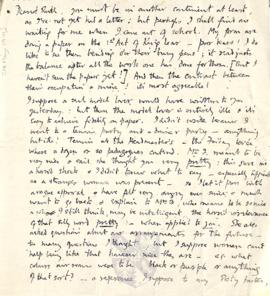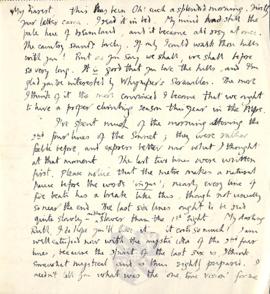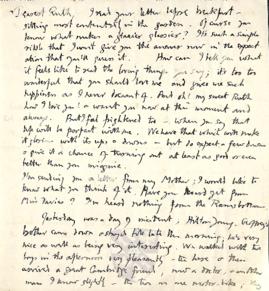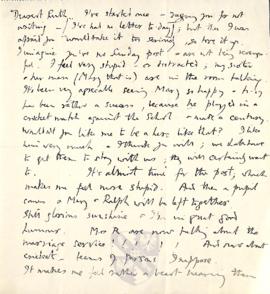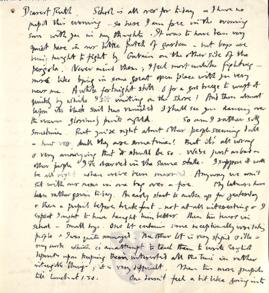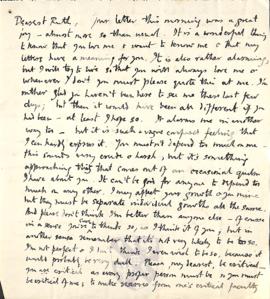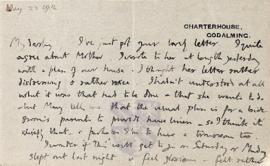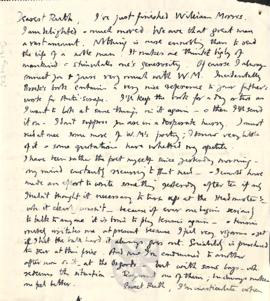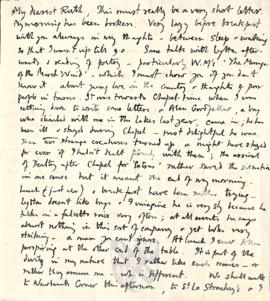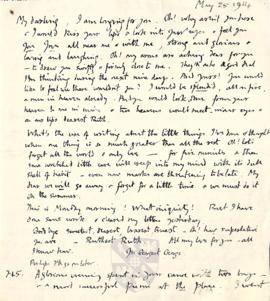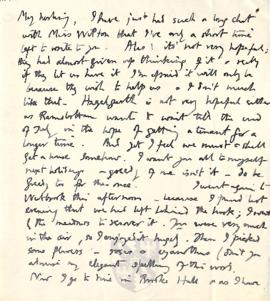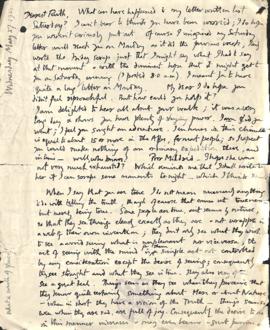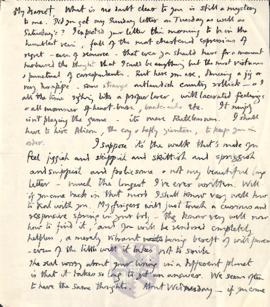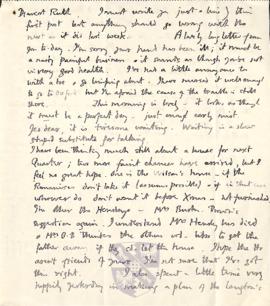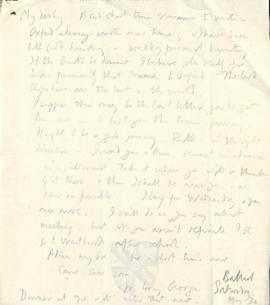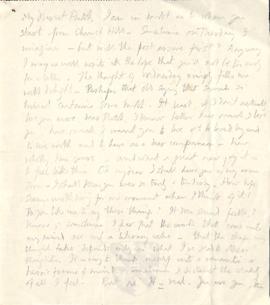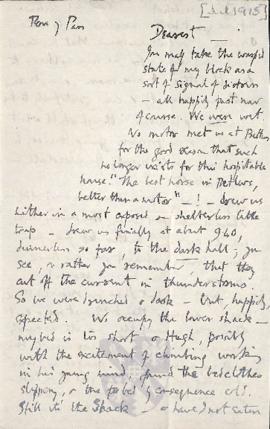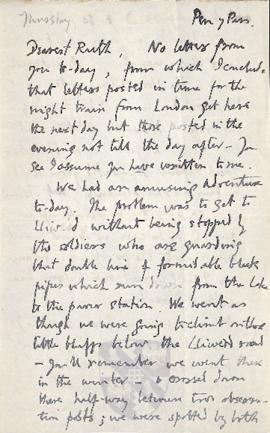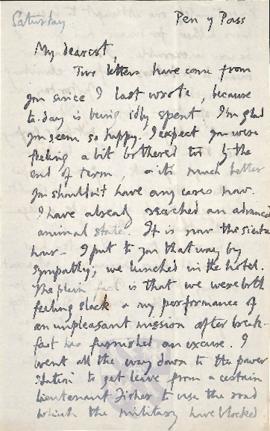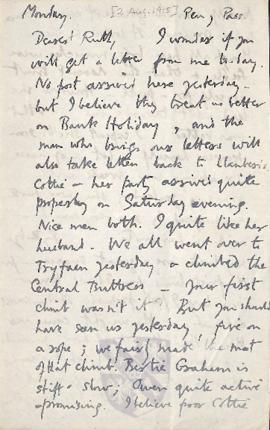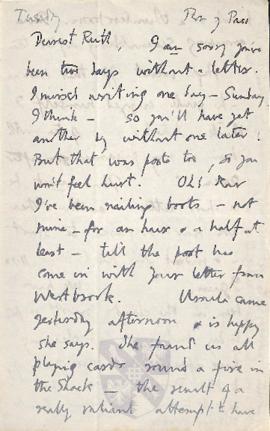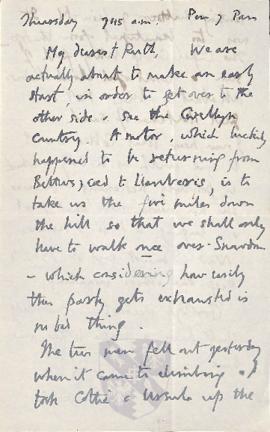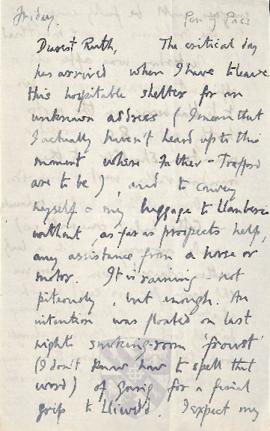Identity area
Reference code
Title
Date(s)
Level of description
Series
Extent and medium
Context area
Name of creator
Biographical history
George Mallory was a student at Magdalene College, Cambridge (1905-1909) and member of the 1921, 1922, and 1924 British Mount Everest Expeditions. He disappeared with Andrew Irvine attempting to summit Mount Everest in 1924. His body was discovered in 1999.
George Leigh Mallory was born on 18 June 1886 at Mobberley, Cheshire, the eldest son of Herbert Leigh Mallory (1856–1943), rector of Mobberley and later vicar of St John's, Birkenhead, and his wife, Annie Beridge Jebb. He had an elder and a younger sister (Mary and Avie) and a brother, Sir Trafford Leigh Leigh-Mallory (who attended Magdalene College 1911-1914). His father changed his surname to Leigh-Mallory in 1914.
Mallory was educated at Winchester College (1900–05) before joining Magdalene College where he studied history under A. C. Benson. He was secretary and later Captain of the Boat Club, a member of the College's Kingsley Club, the University's Fabian Society and the Marlowe Dramatic Club. He was the College's representative on the committee of the University's Women's Suffrage Association. His circle of friends included many members of the Bloomsbury Group including Lytton and James Strachey, Duncan Grant (who painted several nude studies of him 1912-1913) and John Maynard Keynes.
After graduating he stayed in Cambridge for a year to write an essay which he later published as Boswell the Biographer (1912). During 1909–1910 he lived for five months at Roquebrune in the Alpes Maritimes to improve his French in preparation for a teaching career. In 1910 Mallory became an assistant master at Charterhouse, Godalming, Surrey, where he taught English, history, and French, and introduced students, including Robert Graves, to mountain climbing.
On 29 July 1914 Mallory married Ruth, daughter of Hugh Thackeray Turner, an architect. They had two daughters and a son. He was required to remain at Charterhouse when war came, and wrote a pamphlet, War Work for Boys and Girls (1915), to promote international understanding. He was later commissioned in the Royal Garrison Artillery as 2nd Lieutenant in December 1915, and assigned to the 40th Siege Battery, where he participated in the shelling at the Battle of the Somme. Transferred to a staff position, he served as a liaison officer with the French and was promoted to 1st Lieutenant before being invalided home. He returned to France for the final months of the war. After the war he became increasingly dissatisfied with school teaching and drafted an unpublished public school novel.
Mallory's main passion was mountaineeringand he climbed in the Alps, the Lakes, and north Wales. His climbing companions included Geoffrey Winthrop Young, Geoffrey Keynes, and Cottie Sanders (the novelist Ann Bridge). As a rock-climber he was renowned for his grace and sense of balance, but he also had a reputation for impetuosity, imprudence, and absent-mindedness.
Geoffrey Winthrop Young persuaded Mallory to join the first Everest expedition in 1921 because it would make his name and enhance his career as an educator or writer. In 1921 he explored the Tibetan side of Everest and reached the north col with Guy Henry Bullock (1887–1956) of the diplomatic service, who was a school friend of Mallory's from Winchester, and several porters. In 1922 he returned to Everest and reached 8200 metres without supplemental oxygen, saving the lives of three companions when they slipped on the descent. After George Finch's party went even higher with oxygen, Mallory led an ill-advised attempt to reach the north col after a heavy snowstorm that resulted in the deaths of seven porters in an avalanche.
Mallory lectured on Everest in Britain in 1922 and in America in 1923. The New York Times (18 March 1923) reported that when asked why climb Everest, Mallory replied, 'Because it's there.' In May 1923, he became a lecturer and assistant secretary in the Cambridge University Board of Extramural Studies.
In 1924 Mallory was promoted to climbing leader on Everest when Colonel E. F. Norton unexpectedly replaced General C. G. Bruce, who had fallen ill, as overall leader. Despite a prevailing prejudice, which he had shared, against oxygen, Mallory wanted to use it after seeing the benefits in 1922, and as he became increasingly obsessed with conquering the mountain. He developed a plan to give himself the best chance to reach the summit by using oxygen with his climbing partner Andrew Irvine. After two unsuccessful attempts without oxygen, he put his plan into action. Mallory and Irvine left their camp on the north-east ridge on 8 June 1924, and were seen momentarily through a break in the clouds by Noel Odell (1890–1987), who said they were probably on a rock outcrop known as the Second Step, below the final summit pyramid. Their location during this sighting has been the subject of debate. After they failed to return, a memorial cairn was erected at the foot of Everest, and memorial services were held at Magdalene College, Cambridge, at Merton College, Oxford, at St John's, Birkenhead, and on 17 October 1924 at St Paul's Cathedral, London.
Mallory's friends wanted to believe that he reached the summit, though this remains unproven, and it is usually assumed that he did not. In 1933 Percy Wyn Harris found an ice axe on bare slabs of rock below the First Step with markings that matched those on Irvine's walking sticks. In 1975 Wang Hung-Bao (d. 1979), a Chinese climber, found the body of an 'English dead' in old-fashioned clothing on a ledge at about 26,600 feet, also below the First Step. In 1999 an expedition dedicated to searching for Mallory and Irvine found Mallory's frozen body on a snow terrace at 27,000 feet. The body was identified by a name tag sewn into Mallory's clothing. After a brief ceremony, Mallory's body was reburied in the snow on 1 May 1999.
Archival history
Content and structure area
Scope and content
This collection consists of records relating to George Mallory's time whilst he was a student at Magdalene College, a few from his time at school at Winchester College, and from his career post Magdalene as a schoolmaster at Charterhouse.
The bulk of the collection is made up of letters written between him and his wife Ruth from the time of their engagement in 1914 until his death on Everest in 1924. The collection also contains the three letters found on his body in 1999.
The collection does not contain any original photographs although there are a number of copies which can be used for reference but cannot be reproduced without the prior consent of the copyright owner.
There is also a biographical file containing articles and other secondary sources about Mallory - see MCHR/1/MALLORY
Appraisal, destruction and scheduling
Accruals
System of arrangement
Conditions of access and use area
Conditions governing access
Conditions governing reproduction
Language of material
Script of material
Language and script notes
Physical characteristics and technical requirements
Finding aids
Allied materials area
Existence and location of originals
Existence and location of copies
Related units of description
Notes area
Note
Please be aware that some of the letters contain historic language that is outdated or offensive.

